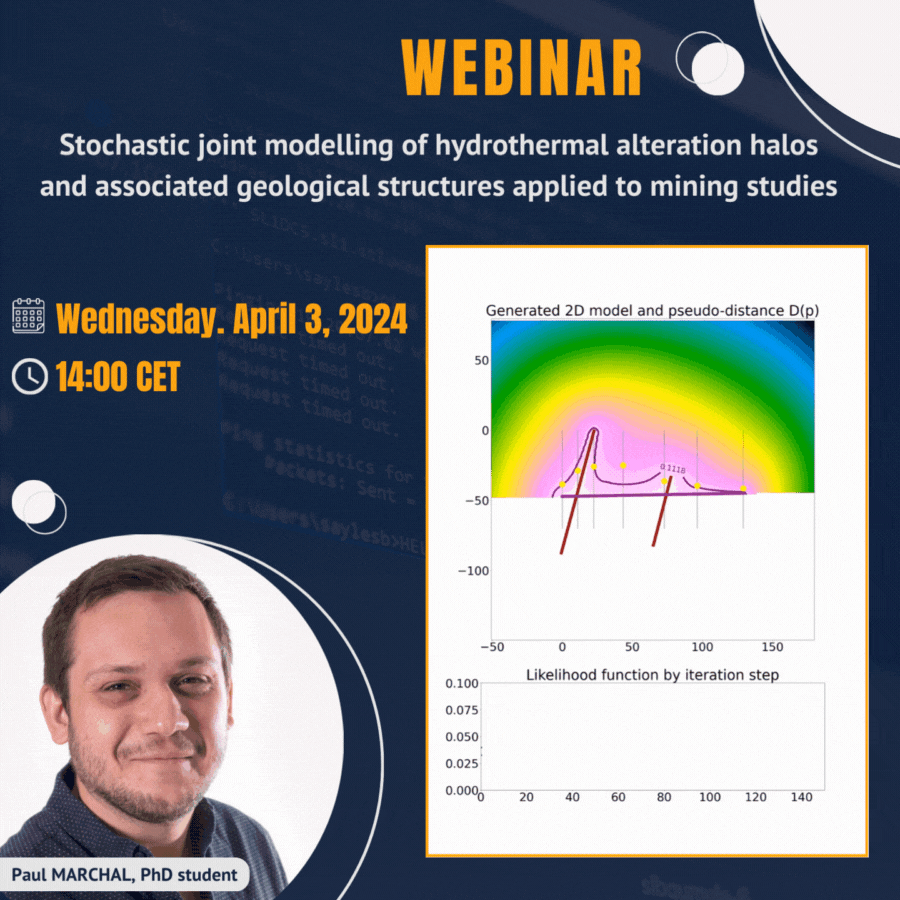
ABSTRACT >> Read More
Alteration halos are key players in the process of metal production linked to hydrothermal pulses. These deposits are often surrounded by subconcentric envelopes of minerals produced through alteration of host rocks by reactive brines. On the one hand, halos are anomalies that are easier to observe during exploration, due to changes in the physical and chemical properties of the rocks and their greater extension. On the other hand, they may be problematic during production if they include reactive minerals penalizing recovery, or if poorly consolidated elements induce geotechnical hazards affecting the mine planning. Conversely, they may reduce crunching costs and increase permeability during in-situ recovery.
The geometry of alteration halos is related to regional and local geological features such as faults and fractures, unconformities and facies heterogeneities. We propose a methodology for jointly modeling alteration and the structures that control it. These geological elements are used to produce a structural skeleton. Skeleton characteristics, such as the number of components, their position and orientation, are modified using a Metropolis-Hastings algorithm, where components are generated using a marked-point process. Following an implicit modeling strategy, a pseudo-distance field D(p) is calculated relatively to the skeleton. D(p) is then used to calculate a likelihood term and to extract alteration fronts as isovalues.
In this webinar, we demonstrate the software prototype implementing the proposed methodology on a 2D outcrop. Through this application, we demonstrate the ability of the methodology to jointly infer plausible geometries of alteration haloes and of the associated geological structures.
